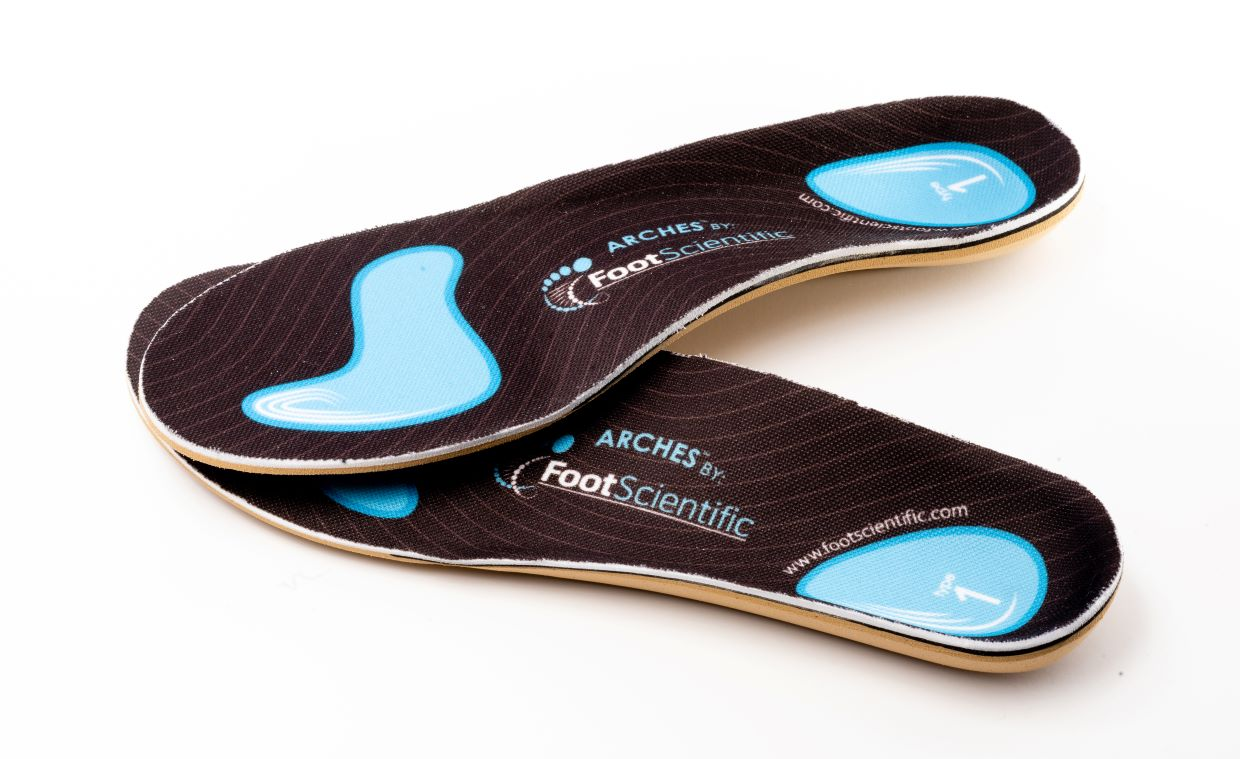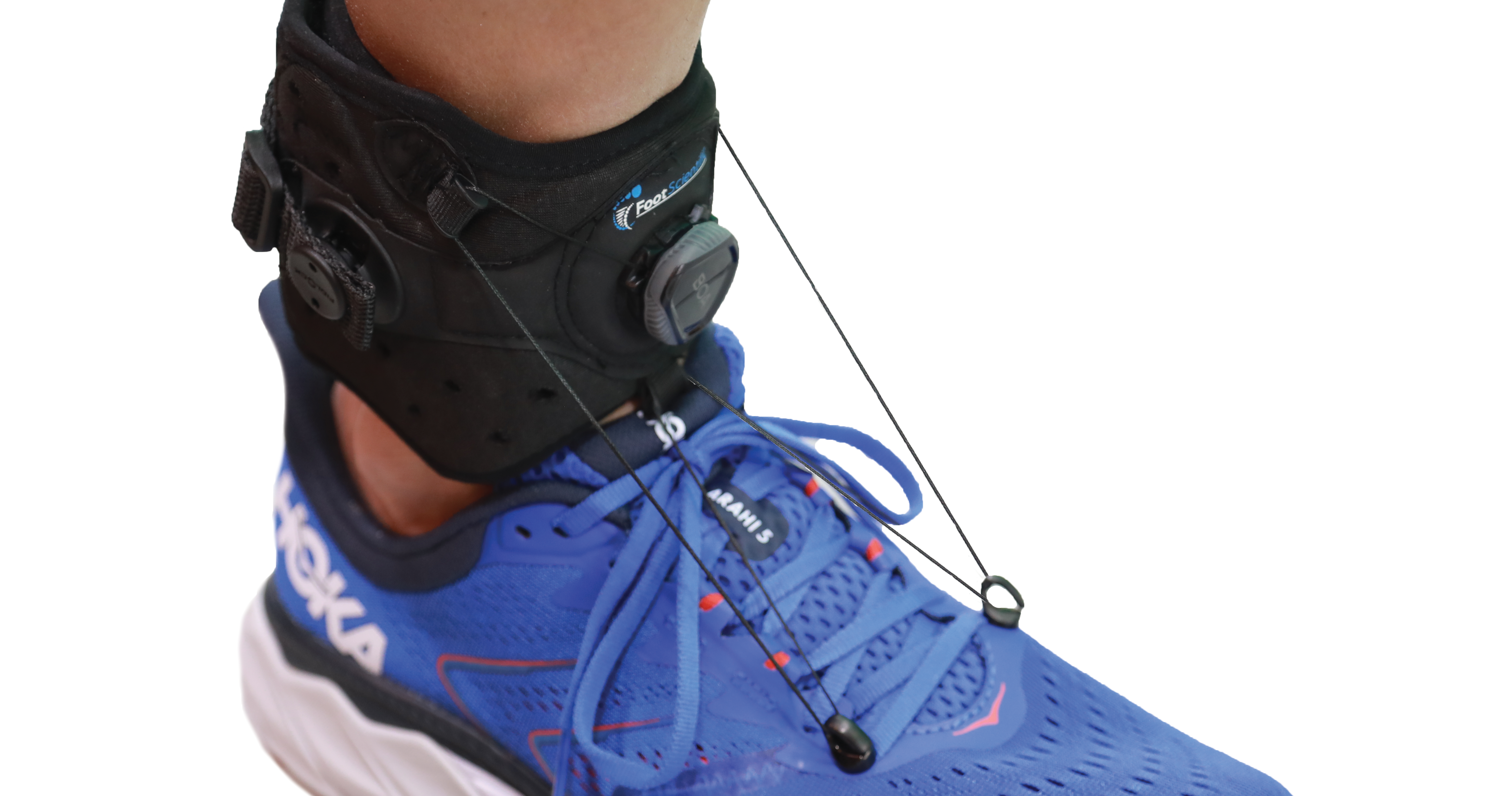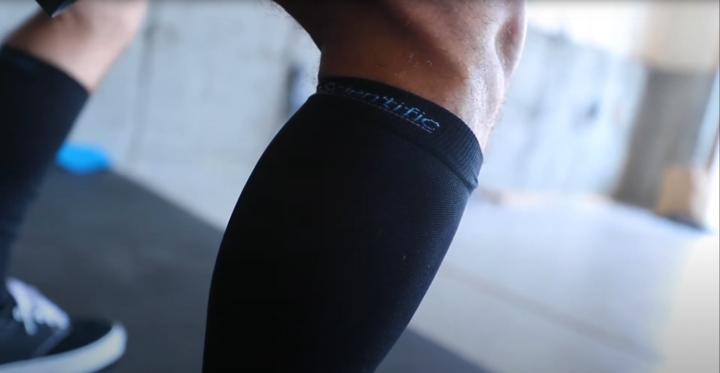Understanding Plantar Fasciitis: Causes, Symptoms, and Treatment
It is useful to begin with the anatomical meaning: plantar means foot and fascia means band. The plantar fascia is a band of ligament close to the sole of the foot, which spans across the arch, from the heel bone to the ball of the foot. This ligament is one of the most important elements of the foot's structure, as it provides foot support and critical rigidity throughout the gait cycle.
When you take a step, the heel and ball of your foot hit the ground first. As your weight is applied, the tibia (bone in your lower leg) turns inward and the foot pronates, or in other words, the arch flattens. This stretches the plantar fascia ligament. The flattening of the arch and stretching of the plantar fascia absorbs shock and allows the foot to accommodate to irregularities in the walking surface.
So the plantar fascia functions as a tension bridge in the foot, providing both static support and dynamic shock absorption. Any adverse condition effecting the plantar fascia can cause disruption of daily activities such as standing, walking, and running. It can result in both acute and chronic pain - as you may well know.
'Plantar Fasciitis is the most common cause of pain in the heel, estimated to account for 11-15% of foot symptoms requiring professional care.'
What Causes Plantar Fasciitis?
- While the exact cause of plantar fasciitis is poorly understood, we can assume that it is probably multifactorial. It is well known that plantar fasciitis can occur in association with various arthritides (resulting in inflammation and swelling), but in approximately 85% of the cases, the etiology is unknown.
- Increased body-mass index significantly increases the risk of plantar fasciitis. A matched case-control study found that limited ankle dorsiflexion, obesity, and prolonged weight bearing at work play a role in the etiology of plantar fasciitis. Mechanical overload, whether the result of biomechanical faults, obesity, or work habits, may contribute to the symptoms of heel pain. Findings also indicate that tightness of the Achilles tendon as mentioned, and inappropriate shoe wear may contribute to the onset of plantar fasciitis. There is even evidence that the posture that the individual adopts during sleep could influence the contracture of muscles, causing or worsening his/her plantar fasciitis pain.
Causes of Plantar Fasciitis - High Arch
- While unproven, many articles have proposed that plantar fasciitis may be due to a lack of cushioning in a rigid, high arched foot. Individuals and athletes with pes cavus, high arched feet, have increased stress on the plantar fascia with foot strike. When not corrected, the high arch causes the plantar fascia to become too tight, and the calf muscles and Achilles tendon to also tighten; this causes the plantar fascia to not effectively extend in the heel strike phase of walking.
Causes of Plantar Fasciitis - Flat Foot
- Recall that flattening of the foot as a natural part of shock absorption in walking stretches and releases the plantar fascia. The foot that is always in a state of over-pronation puts ongoing tension on the plantar soft tissues and potentially creates injury.
- Many authors have pointed out that an increased stretching in a flat foot, or by stretching during over pronation of the foot could be a cause of plantar fasciitis. Alteration of the walking and running biomechanics, by flat feet, may increase plantar fascia stress; as the arch collapses it creates excessive stress on the plantar fascia. When not treated, the low foot arch causes the foot ligaments to loosen - so that the supporting force to the foot arch is weak. This causes undue weight loading on the plantar fascia.
Treating Plantar Fasciitis
- Most healthcare providers will agree that plantar fasciitis can be a frustrating disorder to successfully treat; success is more likely with a comprehensive treatment program rather than with a quick fix.
- Of the wide variety of management strategies, the treatments that should likely be attempted first are those that are low-cost and low-risk. A trial of conservative therapies is generally advised for plant fasciitis before more invasive treatments are attempted.
- Examples of conservative care would be physical and/or chiropractic therapy, soft tissue therapy/massage, taping, night splints, stretching, strengthening, resting, and orthotics. There are more invasive treatment options, such as injections, medication, shock wave therapy, and surgery. Typically, surgical options require a prolonged recovery, and often does not allow for full function.
At Home Treatment Options - Stretching
- Stretching of the planar fascia and Achilles tendon is considered to be one of the hallmark treatments in the management of plantar fasciitis. The goal of a stretching program is to relieve the stress put on the plantar fascia by either the plantar fascia itself being tight or the fascia being tightened by a tight Achilles tendon, as both the plantar fascia and Achilles tendon insert onto the calcaneus. Stretching exercises are central to most plantar fasciitis treatment protocols.
- Multiple randomized controlled studies have shown that stretching exercises improve recalcitrant heel pain within a reasonable time frame. A plantar fascia-stretching protocol is an important component of treatment. It provides you with an effective, inexpensive, and straightforward treatment protocol to treat plantar fasciitis.
- View the Plantar Fasciitis/Heel Pain - Stretching Tips video on YouTube. Greg Thorpe, M.P.T., A.T.C visually shows you how to complete each exercise.
At Home Treatment Options - Taping
- Taping of the foot provides medial arch support for plantar fasciitis patients and potentially removes strain from the plantar fascia. A 2006 study in the Journal of Ortopeaedic & Sports Physical Therpay found that two treatment sessions of the calcaneal-taping technique results in a significant reduction of pain. The same study found the calcaneal taping is an effective tool for relief of plantar heel pain, especially as a precursor to long-term management through orthotics. By taping the affected foot, repetitive injury to the plantar fascia can be avoided and tissue repair can be facilitated.
- We reccomend that the tape not be left on your foot all dau and night as it may prevent the skin from being able to breathe. As well, the foot should be cleaned with a non-moisturizing soap prior to taping.
- For a descriptive explanation, view the Heel Pain Plantar Fasciitis - Tape Wrap Procedure video, available on YouTube.
Orthotic Treatment Options
- The aim of orthotic therapy is to reduce strain on the plantar fascia by cushioning and elevating the heel and/or providing medial arch support. Semi-rigid orthotics significantly reduces pain experienced during walking, and reduces pain and disability for patients with chronic plantar fasciitis. One primary advantage of this option is that treatment for pain relief can commence immediately.
- Orthotics may also be useful for overweight plantar fasciitis patients, as they help reduce shock and cause more even weight distribution over the plantar fascia and its insertion on the calcaneus.
Custom-made orthotics may also be a suitable option in the beginning stages of treatment; however, they are far more costly than prefabricated orthotics. In a trial involving 236 participants, prefabricated shoe inserts were found to be superior both to using custom-made orthotics as well as to stretching alone. - Findings such as these continue to inform a consensus in current research that there are no statistical advantages to custom orthotics. Prefabricated orthotics allow for a combination of maximum comfort for the patient, immediacy of pain relief, and affordability.
- While selecting prefabricated, or custom-made orthotics, it is vital that you select orthotics that are uniquely designed to correct your specific foot type. For example, if you have a flat foot, using an orthotic for high arches might increase the stress on the plantar fascia and visa versa. Utilize the how to determine your foot type guide, to ensure that you are using orthotics that are specifically designed for your feet.
Foot Type and Orthotic Selection Explained
- Orthotics (insoles) can actually worsen plantar fasciitis if they do not properly match your foot type. The micro-tears causing your pain result from stress on the plantar fascia, which can occur from either a high, rigid arch or a flat arch. It’s essential to address plantar fasciitis with the correct type of orthotic.
- If you have a flat foot, the best orthotic focuses on correcting pronation (“Type 1” foot). If you have a high arch, the best orthotic addresses supination (“Type 3” foot). For a neutral arch, you should prioritize comfort and support. This link explains how to determine your foot type and provides our recommended orthotic correction to best match your specific foot structure.
References
1. Hyland, M. R., Webber-Gaffney, A., Cohen, L., & Lichtman, S. W. (2006). Randomized controlled trial of calcaneal taping, sham taping, and plantar fascia stretching for the short-term management of plantar heel pain. Journal of Orthopaedic & Sports Physical Therapy, 36(6), 364-371.
2. Singh, D., Angel, J., Bentley, G., & Trevino, S. G. (1997). Fortnightly review: Plantar fasciitis. Bmj, 315(7101), 172-175.
3. Young, C. C., Rutherford, D.S., & Niedfeldt, M. W. (2001). Treatment of plantar fasciitis. Am Fam Physician, 63(3), 467-74.
4. Lemont, H., DPM, Ammirati, K. A., BS, & Usen, N., MPH. (2003, May). Plantar Fasci it is: A Degenerative Process (Fasciosis) Without Inflammation. Journal of the American Podiatric Medical Association, 93(3), 234-237.
5. Lapidus, P. W., & Guidotti, F. P. (1965). 15 Painful Heel. Clinical Orthopaedics and Related Research, &NA;(39).
6. Buchbinder, R. (2004). Plantar Fasciitis. New England Journal of Medicine, 350(21), 2159-2166.
7. Thomas, J. L., Christensen, J.C., Kravitz, S. R., Mendicino, R. W., Schuberth, J. M ., Vonore, J. V., ... Baker, J. (2010). The Diagnosis and Treatment of Heel Pain: A Clinical Practice Guideline-Revision 2010. The Journal of Foot and Ankle Surgery, 49(3).
6. Mahowald, S., Legge, B. S., & Grady, J. F. (2011). The Correlation Between Plantar Fascia Thickness and Symptoms of Plantar Fasci it is. Journal of the American Podiatric Medical Association, 101(5), 365-369.
9. Singh, D., Angel, J., Bentley, G., & Trevino, S. G. (1997). Fortnightly review: Plantar fasciitis. Bmj, 315(7101), 172-175.
10. Riddle, D. L., PT, PhD, Pulsic, M., PT, OCS, Pidcoe, P., PT, PhD, & Johnson, R. E., PhD. (2003, May). Risk Factors for Plantar Fasci it is: A Matched Case-Control Study. The journal of bone and joint surgery, incorporated, 65-A(5), 672-677.
11. Bolivar, Y. A., PhD, Munuera, P. V., PhD, & Padillo, J.P., PhD. (2013). Relationship between tightness of the posterior muscles of the lower limb and plantar fasciitis. Foot & Ankle International, 34(1), 42-46.
12. Tsai, C. T., Chang, W. D., & Lee, J.P. (2010). Effects of short-term treatment with kinesiotaping for plantar fasciitis. Journal of Musculoskeletal Pain, 16(1), 71-60.
13. Stuber, K., BSc, DC, & Kristmanson, K., BSc, DC. (2006, June). Conservative therapy for plantar fasciitis: A narrative review of randomized controlled trials. The Journal of the Canadian Chiropractic Association, 50(2), 116-133.
14. Cole, C., MD, Seto, C., MD, & Grazewood, J., MD, MSPH. (2005, December 1). Plantar fasciitis: Evidence-based review of diagnosis and therapy. American Family Physician, 72(11), 2237-2242.
15. DiGiovanni, B. F., MD, Nawoczenski, D. A., PhD, PT, Malay, D. P., MSPT, Graci, P.A., DPT, Williams, T. T., MSPT, Wilding, G. E., PhD, & Baumhauer, J. F., MD. (2006, August). Plantar Fascia-Specific Stretching Exercise Improves Outcomes in Patients with Chronic Plantar Fasci it is. The journal of bone and joint surgery, incorporated, 66-A(6), 1775-1761.
16. DiGiovanni, B. F., Nawoczenski, D. A., Lintal, M. E., Moore, E. A., Murray, J.C.,
Wilding, G. E., & Baumhauer, J. F. (2003). Tissue-specific plantar
fascia-stretching exercise enhances outcomes in patients with chronic heel pain. J Bone Joint Surg Am, 65(7), 1270-1277.
17. Gross, M. T., Byers, J.M., Krafft, J. L., Lackey, E. J., & Melton, K. M. (2002). The impact of custom semi rigid foot orthotics on pain and disability for individuals with plantar fasciitis. Journal of Orthopaedic & Sports Physical Therapy, 32(4), 149-157.
16. Crawford F, Thomson C. Interventions for treating plantar heel pain. The Cochrane Database of Systematic Reviews 2003, Issue 3. Art. No.: CD000416.
19. Pfeffer, G., Sacchetti, P., Deland, J., Lewis, A., Anderson, R., Davis, W., ... Smith, R. (1999). Comparison of Custom and Prefabricated Orthoses in the Initial Treatment of Proximal Plantar Fasciitis. Foot & Ankle International, 20(4),
214-221.
20. Selig man, D. A., & Dawson, D. R. (2003). Customized heel pads and soft orthotics to treat heel pain and plantar fasciitis. Archives of physical medicine and rehabilitation, 64(10), 1564-1567.
21. Rompe, J. D., Cacchio, A., Weil, L., Furia, J.P., Haist, J., Reiners, V., ... & Maffulli, N. (2010). Plantar fascia-specific stretching versus radial shock-wave therapy as initial treatment of plantar fasciopathy. J Bone Joint Surg Am, 92(15), 2514-2522.
Type your text here
Ask an Orthopedic Surgeon: Plantar Fasciitis Q&A
Expert answers from Dr. Rob Faux, Board-Certified Orthopedic Surgeon
If you've been buying drugstore insoles that "stop working" after a few weeks, here's why: they're treating the symptom, not the cause.
Corrective orthotics address plantar fasciitis by realigning foot biomechanics to reduce fascia strain. Cushioning inserts only provide temporary symptom relief without addressing underlying mechanical causes.
Why Your Heel Hurts: The Real Problem
Plantar fasciitis usually isn't random. It happens because abnormal foot mechanics are pulling your plantar fascia too tight with every step. Think of it like a bowstring that's stretched too far—eventually, it starts to fray and hurt.
The most common cause? Excessive pronation—when your arch collapses and your heel rolls inward too much. This creates abnormal tension on the plantar fascia, especially where it attaches to your heel bone.
Why Generic Cushioning Fails
Foam inserts or gel heel cups feel good initially because they cushion the inflamed fascia. The problem? They don't fix why your fascia is inflamed in the first place. Within weeks, symptoms return because the mechanical problem persists.
Corrective orthotics work differently by:
- Controlling heel position — Medial posting brings a pronated heel to neutral, reducing the "bowstring" effect on the plantar fascia
- Supporting the arch — Proper arch support maintains the longitudinal arch, reducing fascia elongation during weight-bearing
- Redistributing forces — Spreads pressure across the entire foot instead of concentrating stress on the fascia insertion at the heel
Treatment Protocol by Foot Type
Flat Feet with Plantar Fasciitis:
Type 1 orthotics with 3° medial posting are essential. The excessive pronation in flat feet creates maximum strain on the plantar fascia. The medial heel wedge counters this abnormal motion, immediately reducing fascia tension.
Neutral Feet with Plantar Fasciitis:
Type 2 orthotics with moderate arch support and honeycomb heel cushioning provide the ideal balance. These feet don't need aggressive posting, but benefit from arch support that prevents fascia overstretch and targeted cushioning that reduces impact forces.
High Arched Feet with Plantar Fasciitis:
Type 3 orthotics with first ray relief address the unique mechanics of high arches. These feet often have limited shock absorption and excessive pressure on the heel and ball of foot. The Type 3 design cushions these pressure points while maintaining the natural arch structure.
What to Expect: Timeline for Relief
- Acute Phase (0-2 weeks): Immediate reduction in pain intensity as biomechanical strain decreases
- Healing Phase (2-8 weeks): Progressive improvement as fascia inflammation resolves with proper mechanics
- Maintenance (8+ weeks): Continued use prevents recurrence by maintaining correct foot alignment
How to Choose Your Orthotic
The Wet Test (60 seconds):
- Full footprint = flat foot → Type 1
- Moderate footprint with visible arch = neutral → Type 2
- Narrow middle footprint, minimal arch contact = high arch → Type 3
The Research Backs This Up
Studies consistently show that corrective orthotics with appropriate posting provide superior outcomes compared to cushioning alone for plantar fasciitis, with success rates of 70-80% when properly matched to foot type.
Recommended Solution:
For Flat Feet: Arches Type 1 - Pronation Control with 3° medial posting
For Neutral Feet: Arches Type 2 - Neutral Support with arch cushioning
For High Arches: Arches Type 3 - High Arch Support with first ray relief
Here's the truth: the same diagnosis—plantar fasciitis—requires completely different treatments depending on your foot type.
Pronation (flat feet), neutral, and supination (high arch) foot types each require specific corrective geometries. Comfort orthotics provide cushioning without structural realignment and won't fix biomechanical issues causing your plantar fasciitis.
The 60-Second Self-Assessment
Step with a wet foot on dry concrete. Look at your footprint:
- Full footprint without arch gap = Flat foot → Need corrective support
- Very narrow middle foot with only heel/ball contact = High arch → Need cushioning
- Moderate middle foot = Neutral → Need balanced support
Type 1 - Pronation/Flat Feet
What's happening: Excessive pronation overstretches the fascia like pulling a bowstring too tight. Your heel tilts excessively inward, creating a domino effect of strain.
What you need: 3-5° medial heel posting to counter excessive valgus tilt and reduce strain on the fascia.
Indicated for:
- Symptomatic flat feet
- Early/middle stage posterior tibialis tendinosis
- Midfoot arthritis
- Plantar fasciitis in individuals with flatfoot deformities
Type 2 - Neutral
What's happening: Normal mechanics but often insufficient shock absorption or arch support. You're overloading specific areas (heel, ball of foot) without proper cushioning.
What you need: Moderate arch support without aggressive posting. Strategic cushioning at pressure points.
Indicated for:
- Plantar fasciitis without obvious flat foot
- Metatarsalgia (ball of foot pain)
- Forefoot symptoms
- Plantar plate injuries
Type 3 - Supination/High Arch
What's happening: Rigid foot structure with poor shock absorption and excessive heel pressure. Your high arch doesn't flex to absorb impact like it should.
What you need: 3° lateral heel posting with first metatarsal relief to cushion pressure points while maintaining arch height.
Indicated for:
- Cavovarus foot deformity
- Recurrent ankle sprains
- Lateral ankle symptoms
- Peroneal tendon pathology
Why This Matters for Plantar Fasciitis
The same diagnosis requires different orthotic approaches:
- Flat feet: Excessive pronation overstretches the fascia. Needs medial posting to reduce strain.
- Neutral feet: Normal mechanics but insufficient shock absorption. Needs cushioning and moderate support.
- High arches: Rigid structure with poor shock absorption. Needs cushioning with maintenance of arch height.
Research confirms: Studies show that matching orthotic type to foot structure significantly improves outcomes, with flat feet and medial posting showing 75% reduction in pronation-related injuries.
The good news: 90% of plantar fasciitis cases resolve with conservative treatment. Surgery should be a last resort, not a first option.
See an orthopedic surgeon if plantar fasciitis persists beyond 6-12 months despite conservative treatment, or if symptoms significantly impact daily activities and quality of life.
Conservative Treatment Timeline
Most plantar fasciitis cases resolve with conservative treatment including:
- Corrective orthotics matched to foot type
- Stretching exercises (calf and plantar fascia)
- Activity modification
- Anti-inflammatory measures
- Night splints
Expected timeline: 3-6 months for significant improvement with consistent conservative treatment.
Red Flags for Surgical Consultation
Duration-Based Indications:
- No improvement after 6 months of appropriate conservative treatment
- Minimal improvement after 12 months of comprehensive non-surgical care
- Progressive worsening despite treatment compliance
Symptom Severity Indications:
- Unable to work due to heel pain
- Severe pain with first steps in morning that doesn't improve throughout day
- Night pain preventing sleep
- Inability to participate in previously enjoyed activities
- Significant impact on quality of life
Have You Truly Tried Conservative Treatment?
Before considering surgery, ensure you've tried:
- Correct orthotic type — Many patients use wrong type for their foot structure. Did you do the wet test?
- Consistent wear — Orthotics must be worn 6-8 hours daily for minimum 3 months
- Appropriate footwear — Supportive shoes, avoid flat/unsupportive footwear
- Stretching protocol — Daily calf and fascia stretches
- Activity modification — Reduce high-impact activities during healing phase
My Recommendation as an Orthopedic Surgeon
I emphasize aggressive conservative treatment first. Many patients referred to me for "failed treatment" actually had:
- Wrong orthotic type for their foot structure
- Inconsistent orthotic use
- Inappropriate footwear (wearing orthotics in flip-flops won't work)
- Inadequate stretching compliance
Ensure you've truly exhausted conservative options with the RIGHT treatments before considering surgery.
Surgical Options (If Conservative Truly Fails)
If conservative treatment genuinely fails after 12+ months, surgical options include:
- Plantar fascia release: Partial cutting of plantar fascia to reduce tension
- Gastrocnemius recession: Lengthening tight calf muscles
- Heel spur removal: If large spur is present
Success Rates:
- Conservative treatment: 90% success rate with proper implementation
- Surgical treatment: 70-80% satisfaction rate, but carries risks
When to Seek Immediate Evaluation
See a doctor right away if you have:
- Sudden onset of severe heel pain after trauma
- Heel pain with fever, redness, or swelling (possible infection)
- Numbness or tingling (possible nerve involvement)
- Inability to bear weight on the foot
Bottom line: Give conservative treatment a fair 6-12 month trial with the correct orthotics, consistent wear, and proper stretching. Most people never need surgery.




